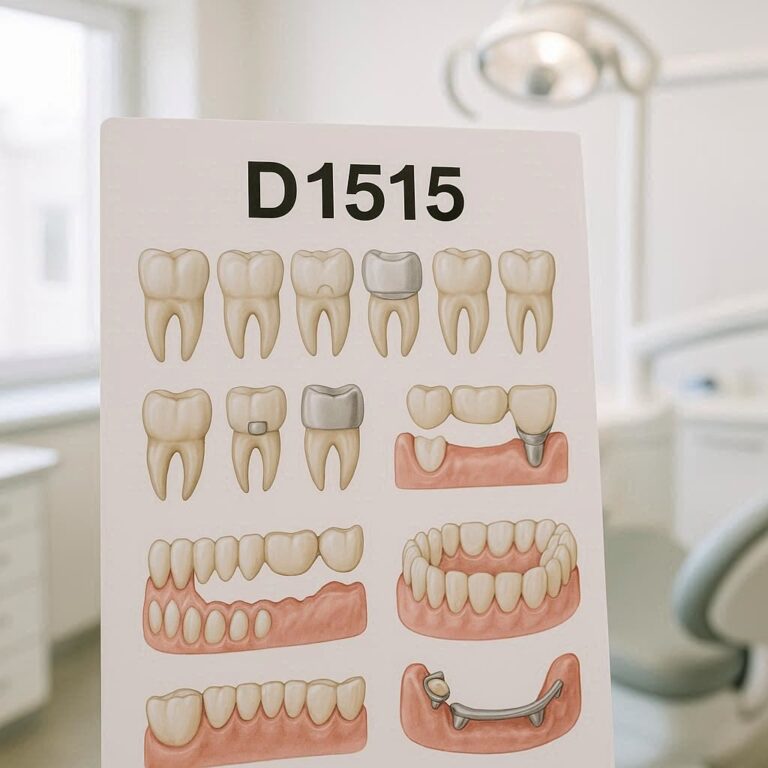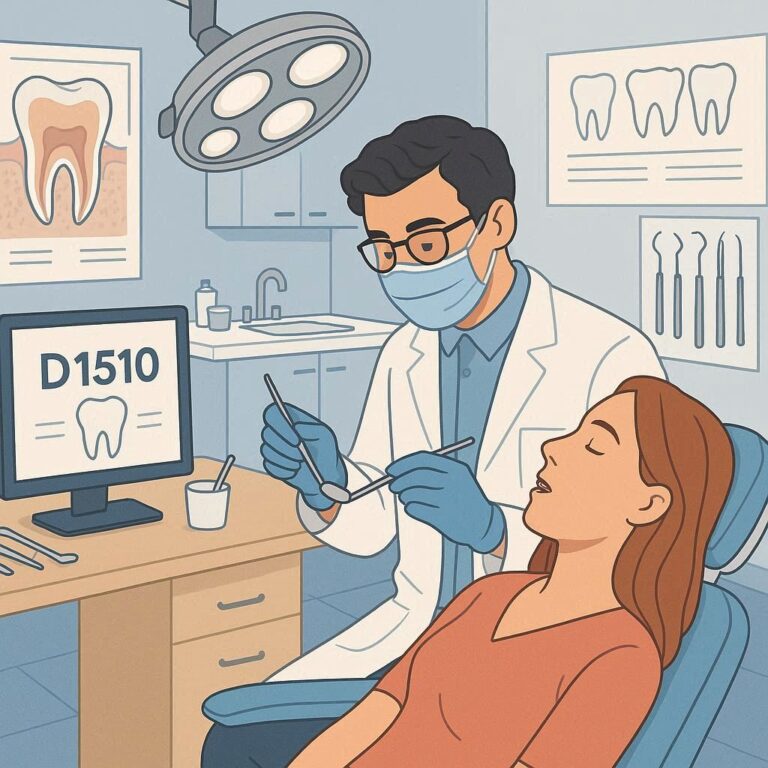dental code bridge sectioning
In the field of dentistry, precision and accuracy are paramount, not only in the execution of procedures but also in the documentation and coding that follow. One such procedure that requires meticulous attention is the sectioning of a dental bridge. Dental bridges are crucial in restoring the functionality and aesthetics of a patient’s teeth, and in certain situations, sectioning may be necessary to address specific dental issues. Understanding the dental codes associated with such procedures is essential for both practitioners and patients to ensure proper treatment and billing. This article delves into the intricacies of dental code bridge sectioning, providing a comprehensive overview of the relevant codes, procedures, and their implications.

What is the Dental Code for Sectioning a Bridge?
Definition of Dental Bridge Sectioning
Dental bridge sectioning is a procedure where a dental bridge, typically used to replace missing teeth, is cut or divided to address certain dental conditions. This procedure may be necessary due to complications such as decay, misalignment, or the need for other restorative treatments.
Reasons for Sectioning a Dental Bridge
There are several reasons why a dental bridge may need to be sectioned:
- Decay Under the Bridge: If decay is found under a bridge, sectioning allows for the removal of the bridge and treatment of the decay.
- Improper Fit or Alignment: Over time, a dental bridge may become misaligned, requiring sectioning to correct the issue.
- Damage or Wear: A bridge that has been damaged or worn down may need to be sectioned for repair or replacement.
- Preparation for Implant Placement: In some cases, sectioning a bridge is necessary to prepare for dental implants.
Overview of Dental Codes in Dentistry
Dental codes, also known as CDT (Current Dental Terminology) codes, are standardized codes used by dentists to describe dental procedures for billing and insurance purposes. These codes are essential for ensuring accurate documentation and reimbursement. The American Dental Association (ADA) maintains and updates these codes regularly.
Section Bridge Dental Code
Explanation of the Code D9120
The specific dental code for sectioning a bridge is D9120. This code is defined as “Sectioning of a fixed partial denture, per unit,” and it is used when a dentist needs to cut a bridge for removal or other treatments. The code covers the process of sectioning the bridge but does not include the removal or replacement of the bridge, which may require additional codes.
Procedure and When It’s Used
The procedure for sectioning a dental bridge involves:
- Diagnosis: Identifying the need for sectioning, whether due to decay, misalignment, or damage.
- Preparation: Numbing the area and selecting the appropriate tools for sectioning.
- Sectioning: Carefully cutting the bridge to avoid damage to surrounding teeth and gums.
- Follow-Up Treatment: Depending on the reason for sectioning, follow-up treatments may include decay removal, tooth extraction, or implant placement.
Case Studies and Examples
To illustrate the application of the D9120 code, consider the following scenarios:
- A patient with a 10-year-old bridge presents with severe decay under one of the abutments. The dentist sections the bridge to treat the decay and prepare the site for a new crown.
- Another patient experiences pain due to a misaligned bridge. The dentist sections the bridge to realign it and restore proper function.
Impact of Sectioning on Dental Health
Sectioning a bridge can have significant implications for a patient’s dental health. While it may be necessary to address certain issues, it can also lead to complications such as sensitivity, the need for additional restorations, or changes in bite alignment. Proper diagnosis and careful execution of the procedure are essential to minimize these risks.
ADA Dental Code for Sectioning a Bridge
Role of the ADA in Defining Dental Codes
The American Dental Association (ADA) plays a crucial role in defining and updating dental codes. These codes ensure consistency in dental practice and facilitate communication between dentists, patients, and insurance providers. The ADA reviews and revises codes regularly to reflect advancements in dental technology and changes in practice.
Detailed Breakdown of the ADA Code for Bridge Sectioning
The ADA code D9120 is specifically designed for the sectioning of a bridge. The code is part of the ADA’s comprehensive CDT code set, which includes codes for a wide range of dental procedures. The code description provides detailed guidance on when and how it should be used, ensuring that dental practices can accurately document and bill for the procedure.
Comparison with Other Related Dental Codes
In addition to the D9120 code, there are other related dental codes that may be relevant depending on the circumstances of the sectioning procedure:
- D2750: Crown placement on an abutment tooth.
- D6240: Bridge pontic placement.
- D7250: Surgical removal of a tooth.
Understanding the relationship between these codes is important for accurate billing and treatment planning.
Guidelines for Proper Use of the Code
To ensure proper use of the D9120 code, dentists should:
- Thoroughly Document: Record the reasons for sectioning and the steps taken during the procedure.
- Understand Insurance Requirements: Be aware of how insurance providers interpret the code and any documentation they require.
- Educate Patients: Explain the procedure and its implications to patients, including any additional treatments that may be necessary.
The Process of Sectioning a Dental Bridge
Step-by-Step Guide to Sectioning a Bridge
The process of sectioning a dental bridge is a delicate procedure that requires precision and care. Here is a step-by-step guide:
- Examination and Diagnosis: Assess the condition of the bridge and surrounding teeth.
- Anesthesia: Administer local anesthesia to numb the area.
- Sectioning: Use specialized dental tools to cut the bridge, taking care to avoid damaging adjacent teeth.
- Treatment: Depending on the reason for sectioning, proceed with decay removal, tooth extraction, or other necessary treatments.
- Follow-Up Care: Provide aftercare instructions and schedule follow-up appointments as needed.
Tools and Techniques Used
The tools and techniques used in sectioning a dental bridge include:
- High-Speed Dental Handpiece: For precise cutting of the bridge.
- Dental Burs: Specialized burs designed for cutting through dental materials.
- Surgical Instruments: If extraction or other surgical procedures are required.
Advancements in dental technology have led to the development of more efficient and less invasive tools, improving the outcomes of bridge sectioning procedures.
Precautions and Aftercare
After sectioning a bridge, it’s important to take certain precautions to ensure proper healing:
- Avoid Hard Foods: Patients should avoid hard or chewy foods that could damage the treated area.
- Maintain Oral Hygiene: Regular brushing and flossing are essential to prevent infection.
- Monitor for Complications: Patients should be advised to watch for signs of infection or other complications and to seek prompt dental care if needed.
Challenges and Considerations in Sectioning a Dental Bridge
Common Challenges Faced by Dentists
Dentists may encounter several challenges when sectioning a dental bridge, including:
- Difficulty in Access: Bridges in the back of the mouth or those that are deeply embedded can be difficult to access.
- Risk of Damage: There’s a risk of damaging adjacent teeth or the underlying bone during sectioning.
- Patient Discomfort: Managing patient discomfort and anxiety during the procedure can be challenging.
Patient Considerations and Concerns
Patients may have concerns about the sectioning process, such as:
- Pain and Discomfort: Concerns about pain during and after the procedure.
- Aesthetic Impact: Worry about the appearance of their smile after sectioning.
- Cost and Insurance Coverage: Questions about the cost of the procedure and whether it’s covered by insurance.
Legal and Ethical Aspects
Sectioning a dental bridge also involves legal and ethical considerations, including:
- Informed Consent: Ensuring that patients fully understand the procedure and its risks before giving consent.
- Accurate Documentation: Properly documenting the procedure to protect both the patient and the dentist in case of disputes.
- Compliance with Regulations: Adhering to ADA guidelines and state regulations governing dental procedures.
The Impact of Accurate Dental Coding on Practice Management
Importance of Accurate Coding for Insurance and Billing
Accurate dental coding is critical for ensuring that dental practices receive appropriate reimbursement for their services. Incorrect coding can lead to denied claims, delayed payments, and financial losses for the practice. Moreover, accurate coding ensures that patients are billed correctly and that their insurance benefits are maximized.
How Coding Errors Can Affect Patient Care
Errors in dental coding can have serious implications for patient care. Misunderstandings about what procedures have been performed can lead to gaps in treatment, unnecessary procedures, or delays in care. It’s essential for dental practices to maintain accurate and up-to-date coding practices to avoid these issues.
Best Practices for Dental Code Management
To ensure accurate dental coding, practices should:
- Provide Regular Training: Keep staff updated on the latest changes to dental codes and billing practices.
- Use Specialized Software: Implement dental billing software that includes built-in coding guidelines.
- Conduct Regular Audits: Periodically review coding practices to identify and correct errors.
Advancements in Dental Technology and Their Impact on Bridge Sectioning
New Techniques and Tools in Dentistry
Recent advancements in dental technology have introduced new techniques and tools that enhance the precision and effectiveness of bridge sectioning procedures. These include:
- Laser Dentistry: Lasers can be used to section bridges with greater precision and less discomfort for the patient.
- 3D Imaging: Advanced imaging techniques allow for better planning and execution of bridge sectioning.
- CAD/CAM Technology: Computer-aided design and manufacturing (CAD/CAM) systems enable the creation of more accurate restorations after sectioning.
How Technology is Changing Bridge Sectioning
The integration of new technologies in dental practices is changing the way bridge sectioning is performed. These technologies allow for more precise cuts, reduced patient discomfort, and faster recovery times. Additionally, they enable dentists to create more accurate and aesthetically pleasing restorations, improving the overall outcome for patients.
Future Trends in Dental Procedures
Looking ahead, several trends are likely to shape the future of dental bridge sectioning:
- Minimally Invasive Dentistry: The move towards less invasive procedures will continue, with new tools and techniques that reduce the need for extensive cutting and drilling.
- Personalized Dental Care: Advances in technology will enable more personalized treatment plans, tailored to the unique needs of each patient.
- Sustainability in Dentistry: There will be a growing focus on sustainable practices, including the use of eco-friendly materials and techniques in dental procedures.
Conclusion
Understanding the dental code for sectioning a bridge is essential for both dentists and patients. The code D9120 provides a clear framework for documenting and billing this procedure, ensuring that patients receive the care they need while dental practices maintain accurate records. As dental technology continues to advance, the process of bridge sectioning will become more precise, less invasive, and more effective, ultimately improving outcomes for patients.
FAQs
What is the ADA code for sectioning a bridge?
The ADA code for sectioning a bridge is D9120, which covers the sectioning of a fixed partial denture, per unit.
How does sectioning a bridge affect dental health?
Sectioning a bridge can have significant implications for dental health, including potential changes in bite alignment and the need for additional restorative treatments.
What are the most common reasons for sectioning a dental bridge?
Common reasons include decay under the bridge, misalignment, damage, and preparation for implant placement.
How do advancements in technology affect the process of sectioning a bridge?
Advancements in dental technology, such as laser dentistry and 3D imaging, have made the process of sectioning a bridge more precise, less invasive, and more effective.


